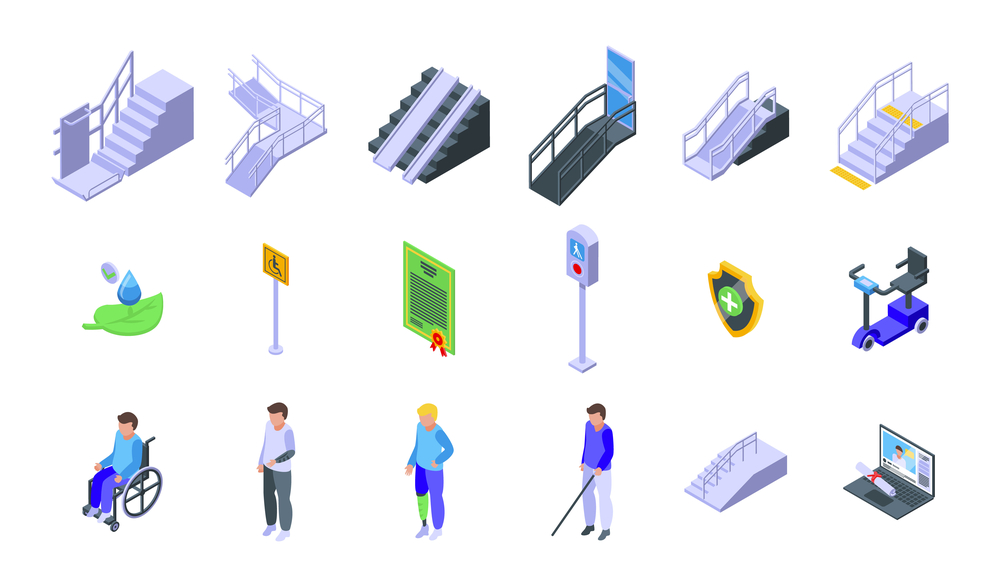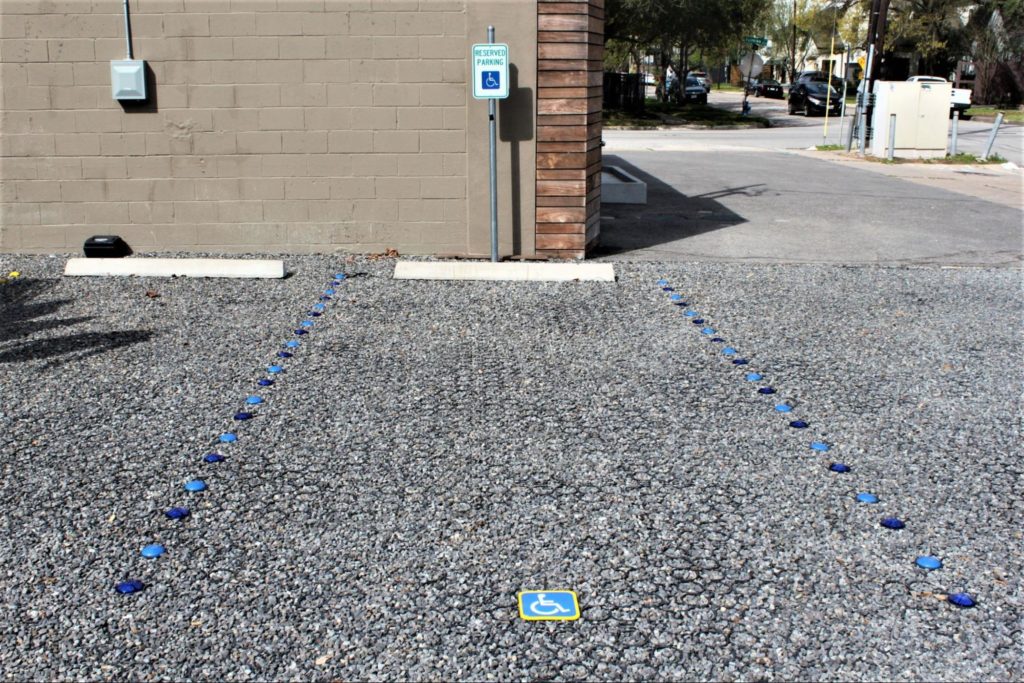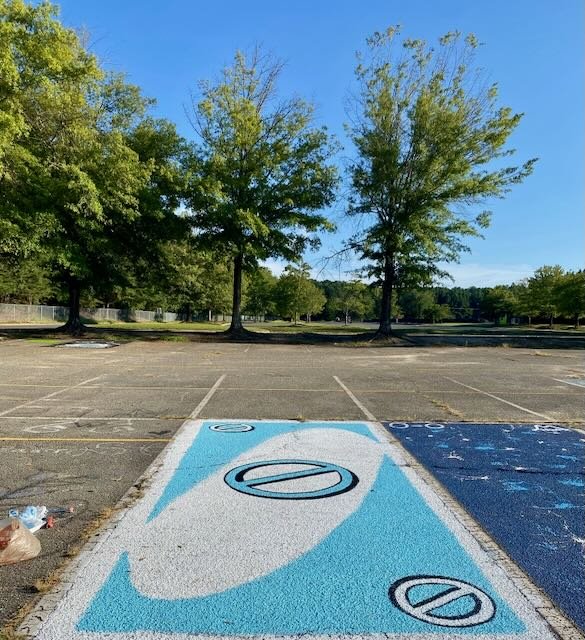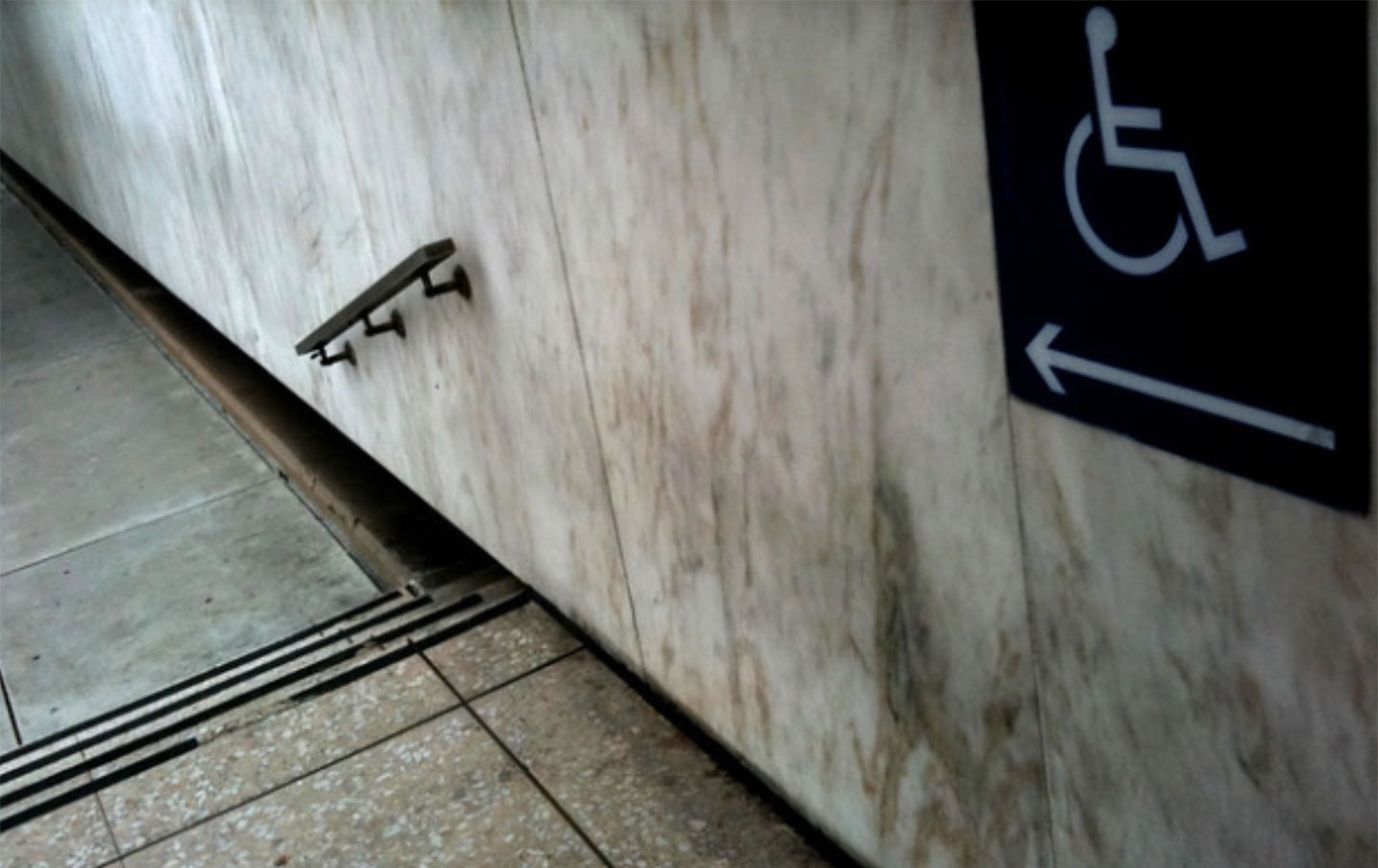Breaking Barriers: Best 6 Game-Changing Ideas for Accessible Parking Spaces
Accessible parking is about more than compliance — it’s about inclusion, dignity, and usability for everyone. In this article, I share six transformative ideas that can help communities and designers move beyond the minimum and build spaces that truly serve people with disabilities.
Overview of Accessible Parking Spaces
Accessible parking spaces are specially designated areas within parking facilities that are designed to be easily accessible for individuals with disabilities. Accessible parking spaces are located closer to building entrances and are wider than standard parking spots, with a minimum width of 96 inches (8 feet) for the parking space and an adjacent access aisle of at least 60 inches (5 feet) wide, as per ADA standards. But a well-designed accessible parking layout isn’t just a regulatory requirement; it’s an essential aspect of community inclusion.
Why Accessible Parking is Crucial
Accessible parking is crucial for several reasons:
- Independence: It fosters independence for individuals with mobility challenges.
- Safety: Properly designed spaces reduce the risk of accidents.
- Inclusivity: They promote a sense of belonging in public spaces.
These aren’t just checkboxes — they reflect how we value participation and equity in our cities.
Source: The Nation, 2023
accessible parking spaces are essential for daily life, offering not just convenience but also ensuring dignity and full access to all aspects of our communities.

Current Challenges in Accessible Parking
Lack of Enforcement and Monitoring
Despite the existence of accessible parking spaces, many locations suffer from a lack of enforcement and monitoring. I’ve often witnessed parked cars in these spots without the required permits, leaving those who genuinely need them to search far and wide. Effective monitoring is crucial because:
- Increased Misuse: Without regular checks, non-disabled drivers illegally occupy these spaces.
- Frustration for Users: It creates barriers for those who truly rely on accessible parking.
Confusing Standards
Complicating matters for property owners is that different jurisdictions can interpret the rules differently. This can make it difficult to determine best practices. The federal Americans with Disabilities Act (ADA) and California state law both mandate specific accessible parking ratios for medical facilities. However, their interpretations can diverge, leading to different compliance outcomes.
For example the term “medical outpatient facilities,” Under the 2010 ADA Standards for Accessible Design, “hospital outpatient facilities” are required to designate 10% of patient and visitor parking spaces as accessible, while certain other medical facilities, such as rehabilitation facilities specializing in mobility-related conditions and outpatient physical therapy facilities, must provide 20% accessible parking. The federal standards, however, do not offer a precise operational or locational definition for “hospital outpatient facility,” potentially allowing for a broader application of this 10% requirement.
In contrast, the California Building Code (CBC), while often mirroring federal ADA percentages, applies a more specific and arguably restrictive interpretation for what constitutes a “hospital outpatient facility” eligible for the 10% accessible parking rule. Drawing from advisory notes, particularly from the U.S. Department of Justice (USDOJ), California typically limits this classification to facilities or units that are physically located within a hospital or are free-standing buildings providing outpatient clinical services of a hospital. Consequently, independent doctors’ offices or clinics not meeting these specific affiliational or locational criteria, even if they provide outpatient services, would generally not qualify for the 10% rule in California. Instead, such facilities would likely fall under the general ADA parking requirements table, potentially resulting in a different number of required accessible spaces compared to a broader federal interpretation. This distinction underscores the critical need for careful assessment of a facility’s specific nature and its relationship to a hospital when determining parking obligations in California.
Exceeding Standards & Best Practices for Accessible Parking
Too many parking facilities stop at the required minimum without pausing to think about the actual need. While adherence to the minimum ADA and CBC requirements is mandatory, many parking facilities, particularly those serving medical practices, often stop at these baseline figures without fully considering the actual, practical needs of their patient population.
A doctor’s office, for instance, might only be required by code to provide a small number of accessible spaces, such as four. However, a truly patient-centered approach necessitates a deeper analysis. If that medical office sees a high volume of patients, many of whom are elderly or have mobility challenges, the legally mandated minimum may prove woefully insufficient, leading to frustration and barriers to care. Building owners and facility managers should therefore look beyond mere compliance and proactively assess the anticipated demand based on patient demographics, appointment frequency, and the nature of the medical services provided.
Going beyond the minimum number of accessible spaces offers significant benefits, especially in healthcare settings. It directly enhances the patient experience by reducing stress and anxiety associated with finding suitable parking, which is particularly crucial for individuals already dealing with health concerns. Providing more accessible parking, or even services like valet parking, demonstrates a commitment to inclusivity and patient-centered care, fostering a welcoming environment for everyone, including those with temporary injuries or parents with young children. This proactive approach not only improves accessibility for those with mobility issues but can also improve overall traffic flow and safety within the parking facility. Such measures can lead to higher patient satisfaction and a more positive perception of the healthcare facility.
Best practices in accessible parking design extend beyond simply increasing the number of spots. They involve thoughtful consideration of location, ensuring spaces are on the shortest accessible route to entrances. Clear, high-contrast signage with Braille, intuitive wayfinding, and well-maintained, level surfaces free of obstructions are also critical. For medical facilities catering to a high percentage of elderly patients or those with significant mobility impairments, features like wider spaces than the minimum, ample van-accessible spots, and even valet services can significantly improve ease of access and reduce patient stress. Adopting universal design principles, which aim to create environments usable by people of all ages and abilities, can further ensure that parking facilities are truly accommodating and contribute positively to the overall healthcare experience.
Design Flaws in Parking Facilities
Adding to the challenges, design flaws in parking facilities can hinder accessibility. Poorly positioned spaces, narrow pathways, or lack of clear signage often defeat the purpose of these designated areas. For example:
- Space Dimensions: Many accessible spots don’t meet the minimum width requirements.
- Location: Some spaces are situated far from entrance points, making access difficult.
We need to address these issues head-on to ensure that accessible parking truly serves its purpose.
Source: TrueGridPaver.com

Game-Changing Idea 1: Smart Parking Technology
Utilizing Sensors for Real-Time Availability
As we explore innovative solutions to enhance accessible parking, smart parking technology stands out. One of the most exciting advancements is the use of sensors that provide real-time availability of accessible spaces. Imagine pulling up to a facility and having precise information about which spots are free, thanks to:
- Ground Sensors: These detect when a vehicle occupies a space, allowing for instant updates.
- Data Feeds: This information can be integrated into systems that inform drivers, reducing frustration.
Mobile Apps for Parking Reservation
Additionally, mobile apps for parking reservations can significantly improve the experience for users. I’ve seen friends with disabilities use apps that allow them to reserve accessible spots ahead of time, ensuring peace of mind. The features can include:
- Location-Based Services: Finding nearby parking with just a tap.
- Notifications: Reminders when a reserved time is approaching.
By incorporating these technologies, we can create a more efficient and user-friendly parking environment for everyone.
Game-Changing Idea 2: Inclusive Design Principles
Universal Design for Parking Spaces
Shifting our focus to inclusive design principles reveals the potential for truly transformative changes in accessible parking. Universal design for parking spaces emphasizes creating environments that are usable by all people, regardless of ability. This means considering:
- Wider Spaces: Larger dimensions to accommodate various mobility aids.
- Optimal Surface Conditions: Smooth and even surfaces to prevent slips and falls.
I recall visiting a facility that exemplified such design; it made navigating in and out hassle-free, which is a game changer for users.
Ensuring Accessibility Beyond Regulations
While regulations are important, going beyond them can make a significant difference. Observing accessible areas with thoughtful features could include:
- Clear Pathways: Direct, unobstructed routes from parking to the entrance.
- Visual and Tactile Cues: Strategically placed signage that aids all users.
By adopting these principles, we can foster a parking environment that’s not just compliant but truly welcoming for everyone.

Game-Changing Idea 3: Community Engagement for Solutions
Collaborating with Disability Advocacy Groups
To create lasting changes in accessible parking, community engagement is key. Working alongside disability advocacy groups can bring forth invaluable insights. These organizations often have firsthand experience with the challenges faced, making collaboration essential.
- Workshops: Hosting workshops can educate both the community and planners on specific needs.
- Feedback Panels: Regular survey sessions can gather input from those who utilize accessible spaces.
I’ve attended a local event where advocates shared personal stories, which sparked essential discussions on improving parking facilities.
Public Awareness Campaigns for Parking Etiquette
Additionally, implementing public awareness campaigns focused on parking etiquette can transform attitudes. These initiatives might include:
- Informative Signage: Clear displays reminding drivers of the importance of accessible parking.
- Social Media Advocacy: Engaging posts and visuals that highlight the impact of misuse.
By fostering community involvement and awareness, we can work together towards a future where accessible parking is respected and utilized correctly
Game-Changing Idea 4: Flexible and Dynamic Signage
Clear and Visible Signs for Parking Spaces
Building on our community engagement efforts, another game-changing idea is implementing flexible and dynamic signage. It’s vital that signs indicating accessible parking spaces are not only clear but also visible from a distance. Imagine driving up to a facility and easily spotting accessible spots thanks to:
- Illuminated Signs: Bright lights that catch the eye, especially at night.
- Contrasting Colors: High contrast between text and background for better readability.
I recall visiting a facility where these clear signs significantly eased my search, making it a stress-free experience.
Utilizing Braille and Symbols for Accessibility
Furthermore, incorporating Braille and universally recognized symbols can enhance accessibility even more. This step ensures that everyone understands their environment, regardless of abilities. Features to consider include:
- Braille Labels: Providing tactile information for those with visual impairments.
- Easy-to-Understand Symbols: Icons that clearly convey the purpose of the space.
By embracing flexible and dynamic signage solutions, we can pave the way for more effective navigation and understanding in parking facilities.
Game-Changing Idea 5: Enforcement and Penalties
Strict Enforcement of Accessible Parking Violations
Transitioning into enforcement and penalties highlights a vital aspect of maintaining accessible parking integrity. Strict enforcement of parking violations is crucial in ensuring that designated spaces remain available for those who truly need them. Imagine if we had frequent patrols or automated systems monitoring these areas, which could significantly reduce misuse.
- Regular Monitoring: Increased presence of enforcement officers or surveillance can deter violators.
- Clear Offender Protocols: Developing systems for reporting inappropriate parking can help users actively participate in policing.
I remember the frustration of seeing someone parked in an accessible space without a permit; better enforcement would change that experience.
Implementing Fines and Penalties for Misuse
Equally important, implementing fines and penalties for misuse acts as a strong deterrent. By clearly outlining consequences for those who park irresponsibly, we can foster a culture of respect. Measures to consider include:
- Ticketing System: Establishing a straightforward process for issuing tickets to violators.
- Public Awareness of Penalties: Creating campaigns that inform drivers about the repercussions of misuse.
With these enforcement strategies in place, we can move towards a more respectful and accessible parking environment for everyone.

Game-Changing Idea 6: Green Spaces and Alternative Transportation
Promoting Eco-Friendly Transportation Options
As we envision a better future for accessible parking, integrating green spaces and alternative transportation options can significantly enhance urban environments. Encouraging the use of eco-friendly transportation not only reduces congestion but also promotes health. Simple ideas include:
- Bike Racks: Providing ample bike parking encourages cycling.
- Electric Vehicle Charging Stations: Facilities for EVs can make these options more appealing.
I remember a local initiative where a bike-sharing program thrived, allowing residents to explore while minimizing their carbon footprint.
Creating Green Areas within Parking Facilities
Moreover, creating green areas within parking facilities adds both aesthetics and functionality. Imagine walking through landscaped sections with plants and trees that improve air quality. Benefits of integrating green spaces include:
- Natural Canopies: Providing shade for parked cars and pedestrians alike.
- Relaxation Zones: Areas for users to rest while waiting for friends or family.
By promoting eco-friendly options and implementing green spaces, we can create a more inviting and sustainable atmosphere around parking facilities.
Moving Forward
Recap of Game-Changing Ideas
As we wrap up our exploration of innovative solutions, it’s clear that addressing accessible parking requires a multifaceted approach. We’ve discussed:
- Smart Parking Technology: Utilizing sensors and mobile apps for real-time availability and reservations.
- Inclusive Design Principles: Emphasizing universal design and moving beyond regulations.
- Community Engagement: Collaborating with advocacy groups and educating the public on parking etiquette.
- Dynamic Signage: Implementing clear, visible signs and Braille for better navigation.
- Enforcement and Penalties: Instituting strict regulations and fines for misuse.
- Green Spaces: Promoting eco-friendly transportation and creating green areas in facilities.
Call to Action for Improved Accessible Parking
It’s time for all of us to advocate for these solutions. I urge community members, business owners, and local governments to come together, fostering a culture of inclusivity and respect. Share experiences, engage in discussions, and push for the necessary changes. Together, we can make accessible parking not just an afterthought but a priority for a better future for everyone. Your voice matters!
FAQs
What makes a parking space accessible?
An accessible parking space includes extra width, an access aisle, and signage, and is located near building entrances to accommodate people with disabilities.
Why is accessible parking important?
Accessible parking supports independence, safety, and dignity for people with disabilities, allowing them equal access to public and private facilities.
How can smart technology improve accessible parking?
Smart sensors and mobile apps can detect real-time availability of accessible spaces and help users find or reserve spots in advance.
What role does design play in parking accessibility?
Inclusive design improves navigation, lighting, tactile paths, and signage to ensure accessibility goes beyond code compliance.
What are the biggest challenges to accessible parking today?
Common issues include improper use of spaces, lack of enforcement, poor signage, remote locations, and non-compliant design standards.
Sources:
- ADA.gov – 2010 ADA Standards for Accessible Design
- ChangingPaces.com – Accessible Signs, Parking Spaces and Ramps: How These are Invaluable to People with Disabilities, 2012
- TrueGrid Paver – Accessible Parking Layout Best Practices
- The Nation – Blocked Parking Spots, Broken Sidewalks, and Boulders: How Common Spaces Fail People With Disabilities, 2023
- Taylor & Francis – Disabled-by-design: effects of inaccessible urban public spaces on users of mobility assistive devices – a systematic review, 2022
- RFID Journal – Top Benefits of Implementing Smart Parking Solutions in Cities, 2024
- Think Architecture – Inclusive Design: Creating Parks for All Generations
If your parking layout causes backups, confusion, or low utilization, we can fix it. Talk to us about a design review or full redesign tailored to your property.

